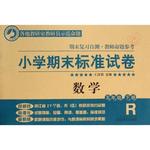题目内容
In Europe many people died during the Second World War. As a result, at the end of the war there were many orphans(孤儿)there. A man called Hermann Gmeiner wanted to help these children. His idea was simple. He wanted orphans to have a home, and he wanted them to have the care and kindness of parents. Gmeiner asked people to give him some money. With this money he built the first SOS Children’s Village at Imst, in Austria. It opened in1949. This is how the SOS stand for “Save Our Souls(灵魂).” This means “Please help us!” An SOS Children’ village gives help to orphans.
Hermann Gmeiner’s idea for helping orphans soon spread(传播)all over the world. By 1983 there were 170 SOS Children’s Villages in the world. People in many countries give money to help the villages. Today the children from the first village have grown up. Now some of them work in other SOS Children’s Villages.
In SOS Villages orphans live in family groups. There are several houses in each village. The biggest village has 40 or 50 houses! Between seven and ten children live in a house. A woman lives with each group of children and looks after them. She gives the children a lot of love and kindness. She cooks meals for them and makes comfortable, happy home for them.
Of course, the children don’t spend all their time in the village. They go to school, they go out with their friends. But the village gives them a home—sometimes for the first time in their lives.
小题1:Which of the following came last?
小题2:An orphan is a child .
小题3:We can conclude(推论)from the article that the money for helping the SOS Villages mainly comes from .
小题4:Which of the following can best summarize(总结) the work a woman in an SOS Village does for each group of children?
Hermann Gmeiner’s idea for helping orphans soon spread(传播)all over the world. By 1983 there were 170 SOS Children’s Villages in the world. People in many countries give money to help the villages. Today the children from the first village have grown up. Now some of them work in other SOS Children’s Villages.
In SOS Villages orphans live in family groups. There are several houses in each village. The biggest village has 40 or 50 houses! Between seven and ten children live in a house. A woman lives with each group of children and looks after them. She gives the children a lot of love and kindness. She cooks meals for them and makes comfortable, happy home for them.
Of course, the children don’t spend all their time in the village. They go to school, they go out with their friends. But the village gives them a home—sometimes for the first time in their lives.
小题1:Which of the following came last?
| A.People gave Gmeiner some money. |
| B.There were many orphans at the end of the war |
| C.Gmeiner built the first SOS Children’s Village |
| D.A man called Hermann Gmeiner wanted to help the orphans |
| A.who has no brother | B.who has no sister | C.who has no parents | D.all of the above |
| A.governments | B.special organization |
| C.the orphans themselves | D.people in general(大体上) |
| A.She gives the children a lot of love and kindness | B.She lives with each group of children |
| C.She cooks meals for children | D.She looks after them |
小题1:C
小题1:C
小题1:D
小题1:A
小题1:考查事件发生的顺序。根据第一段前两行可知,B项时间最早;其次是D;接着是A;最后是C。故选C。
小题1:考查概念。orphan是“孤儿”的意思,即没有父母的孩子。故选C。
小题1:根据第一段“People in many countries give money to help the villages.”可知,社会各界人士的爱心资助是儿童村得以维持的主要资金来源。故选D。
小题1:根据第二段“She gives the children a lot of love and kindness.”可知,每个家的几个孩子有一个“妈妈”,她负责照顾孩子的日常生活,给孩子们关爱。A项概括最全面。故选A。

练习册系列答案
 小学期末标准试卷系列答案
小学期末标准试卷系列答案
相关题目
 topic(话题)to talk about. I want to tell parents to be more patient with your 36_,get to know them and 37 them. And for children, show your 38_to your parents. They are the people who love you. So 39 them your thoughts. In this way, you 40 have a better understanding of each other.
topic(话题)to talk about. I want to tell parents to be more patient with your 36_,get to know them and 37 them. And for children, show your 38_to your parents. They are the people who love you. So 39 them your thoughts. In this way, you 40 have a better understanding of each other.